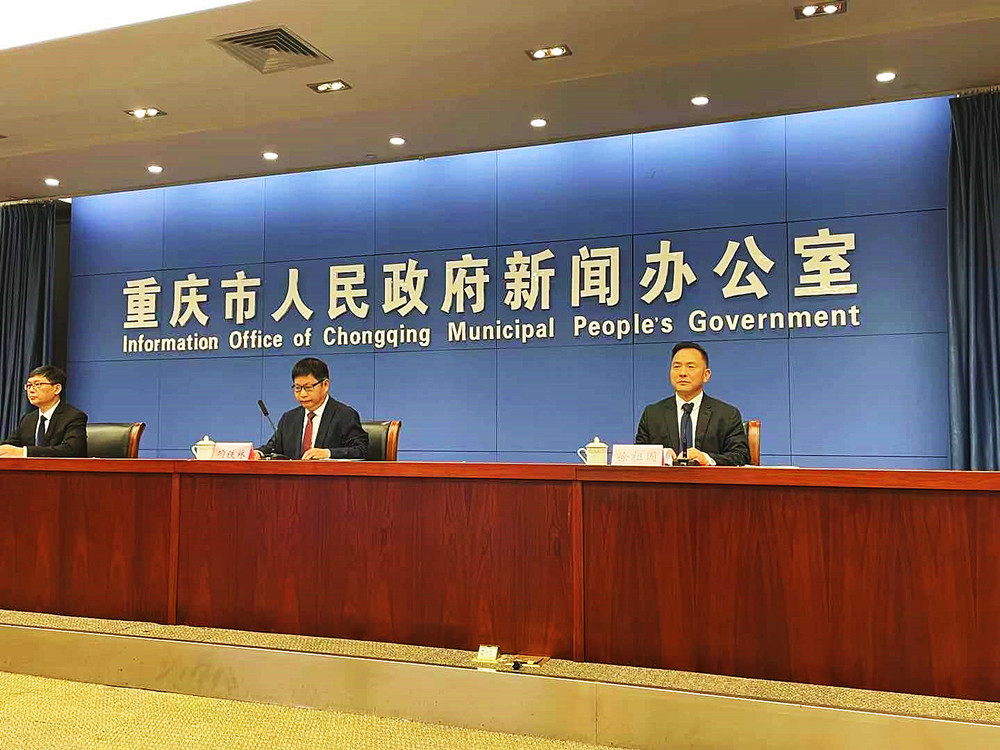Chongqing- The population of Chongqing Municipality in southwestern China increased by 3.208 million from 2010 to 2020, according to a municipal press conference Thursday.
The Information Office of Chongqing Municipal People’s Government held a press conference on May 13th, 2021, where leading officials in the Seventh National Population Census announced results and preliminary analysis for Chongqing Municipality.
The main purpose is to comprehensively analyze China's population in terms of number, structure, and distribution and provide accurate statistical information support for improved development strategies and policy systems, the formulation of plans for economic and social development, and the promotion of high-quality development.
During the census, over 10,000 agencies were established in Chongqing at municipal, district, township, and village levels, while more than 200,000 personnel were hired for the assignment.
Census institutions and personnel overcame difficulties posed by the epidemic to successfully perform a thorough census of all households and populations in the municipality.
Electronic data collection methods were adopted for the direct reporting of data in real-time, while census subjects were able to report their details independently using a QR code link. In addition, departmental administration was strengthened through electronic applications, including big data and mobile phones, which improved the quality and efficiency of census work.
Xiang Tielin, director of the Leadership Group for the Seventh National Population Census of Chongqing Municipal People's Government, and deputy director of the Chongqing Municipal Bureau of Statistics attended the conference to deliver the following census results and key findings.

The Information Office of Chongqing Municipal People’s Government held a press conference on May 13th, 2021, where leading officials in the Seventh National Population Census announced results and preliminary analysis for Chongqing Municipality. (iChongqing/ James Alexander)
| Year | Population | Increase on 2010 | Percentage increase | Avg yearly increase |
| 2020 | 32, 054,250 | 11.12% | 11.12% | 1.06% |
| 2010 | 28,846,200 | - | - | 0.96% |
|
Family households 2020 |
Family household population |
Non-registered households 2020 |
Non-registered household population |
Average per family household (2020) |
| 12,040,200 | 29,477,100 | 587,400 | 2,577,100 | 2.45 (2.7 in 2010) |
|
Area |
Chongqing Urban Area |
Chongqing District centers |
Newly Developed Urban Areas |
Northeast Chongqing + 3 Gorges Reservoir |
Eastern Chongqing + Fuling Mountains |
| Percentage | 65.90% | 32.27% | 33.63% | 25.16% | 8.94% |
| Change (2010) | ↑4.73% | ↑6.42% | ↓1.69% | ↓3.84 | ↓0.89 |
| Stats/Gender | Males | Females |
| Population | 16,202,100 | 15,852,100 |
| Proportion | 50.55% | 49.45% |
| Stats/Age group | 0-14 years | 15-59 years | 60 years + |
| Population | 5,098,400 | 19,945,400 | 7,010,400 |
| Percentage | 15.91% | 62.22% | 21.87% |
| Change (2010) | ↓1.09% | ↓3.36% | ↑4.45% |
| University graduates | 4,940,200 |
| University graduates per 100,000 (2020) | 15,412 |
| University graduates per 100,000 (2010) | 8478 |
| Average education span for over 15s (2020) | 8.75 years |
| Average education span for over 15s (2010) | 9.8 years |
| Illiteracy rate (2020) | 1.09% |
| Illiteracy rate (2010) | 4.21% |
|
Urban population 2020 |
Increase since 2010 |
Rural population 2020 |
Decrease since 2010 |
| 22,264,100 (69.46%) | 6,968,200 people (↑16.43%) | 9,790,100 (30.54%) | 3,760,200 |
| People living outside registered household area | 13,096,400 |
| Floating population within Chongqing Urban Area | 8,285,000 |
| Floating population within Chongqing Municipality | 2,617,800 |
| Citizens from other provinces 2020 | 2,193,600 |
| Citizens from other provinces 2010 | 1,042,000 |
|
Stats/Ethnicity |
Han |
Minority |
| Population | 2,170,800 | 2,170,800 |
| Proportion | 93.23% | 6.77% |
| Increase on 2010 | ↑11.05% | ↑12.06% |
The Seventh National Population Census has obtained a wealth of valuable information to fully ascertain the number, structure, and distribution of the population and identify current trends in demographic changes.
Relevant departments will strengthen cooperation to provide strong statistical information in support of high-quality development, the targeted formulation of related strategies and policies, and the promotion of long-term balanced development.
In light of the wide adoption of mobile and internet-based data collection, Yang Hongyi, deputy director of the Leadership Group for the Seventh National Population Census of the Chongqing Municipal People's Government, and member of the Party Leadership Group of the Chongqing Municipal Bureau of Statistics, answered questions related to public concerns about privacy and data protection, where he summarised the measures adopted universally to ensure the safety of personal information.
"Data security concerns are an issue of particular concern to everyone involved. Therefore, the protection of personal information was a task of utmost consideration during the census process, focusing on four key aspects to ensure the data security for the public as a whole."
By continuing to browse our site you agree to our use of cookies, revised Privacy Policy and Terms of Use. You can change your cookie settings through your browser.
For any inquiries, please email service@ichongqing.info